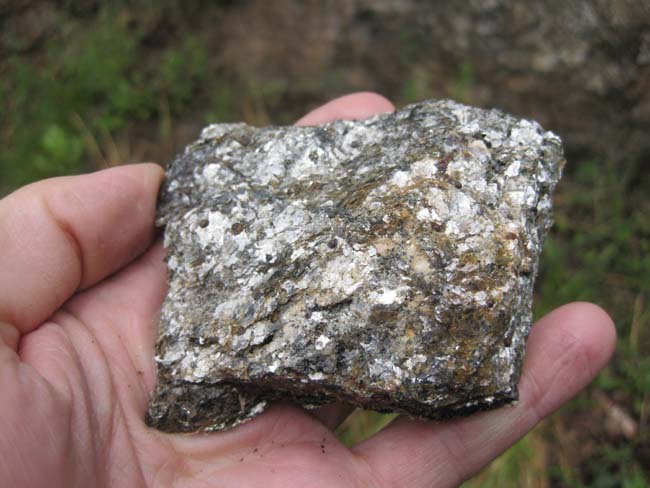The carbonate sedimentary rocks are those rocks composed primarily of calcite. This includes all of the limestones. Limestone are chemical sedimentary rocks because the calcite was carried to the ocean or lake or sea in solution. The calcite then precipitated directly from the water to for the sediment or crystals that make up the rock. These sediments are NOT transported to the basin as particles like is the case with the siliciclastics. These sediments are created in the basin in which they are found. For example: a bioclastic limestone is composed of skeletal grains formed of calcite. This calcite was precipitated by the organism. Later, the organism died and its skeletal remains became part of the ocean bottom. That sediment was buried under more skeletal debris, compacted, and cemented together to form the bioclastic limestone we later see.
Carbonates have two possible origins (biogenic or chemical inorganic) and two possible textures (clastic or crystalline:
- biogenic origin - the grains that make up the rock were created by an organism and deposited on the basin floor when the organism dies. Most of these rocks have a clastic texture. The exception to this rule are reef rocks and stromatolites (calcite deposited by cyanobacteria).
- chemical inorganic origin - the grains that make up the rock were created inorganically, that is, without the help of an organism. The texture of such rocks is often crystalline with the exception of oolitic limestone. The ooids are created when a grain of something (sand, shell fragment, ooid fragment, etc.) rolls around on the bottom of a warm shallow sea and calcite precipitates on that grain as thin layers in a similar manner as pearls are formed. These ooids are later buried and cemented together to form a rigid framework = clastic texture.
 | |
| Photomicrograph of modern ooids from a beach on Joulter's Cay, The Bahamas. Scale bar for size. Photo by Mark A. Wilson (Department of Geology, The College of Wooster) |
 | ||
| Ooids on the surface of a limestone; Carmel Formation (Middle Jurassic) of southern Utah, USA. Scale bar for size. Photo by Mark A. Wilson (Department of Geology, The College of Wooster) |
 |
| Photomicrograph of thin slice of calcitic ooids from the Carmel Formation, Middle Jurassic, of southern Utah, USA. Scale bar for size. Photo by Mark A. Wilson (Department of Geology, The College of Wooster). |
https://ore.exeter.ac.uk/repository/handle/10871/17081 <--parrot fish article
Chert
Chert is off on its own because it is neither a siliciclastic nor a carbonate. Chert is formed by the recrystallization of siliceous skeletal grains such as radiolarian tests, diatom tests, and sponge spicules; or, through the replacement of previously existing material. Limestones are often replaced by chert. Petrified wood is chert. The cellulose in the wood is replaced, molecule by molecule, by chert. Therefore, it can be difficult to tell the origin of chert without field relations. Because all chert is recrystallized, either directly from pore waters or by the replacement of some other substance, it is considered to be chemical inorganic. Note the conchoidal fracture that chert displays. This fracture pattern is what allows chert (aka flint) to be napped to form arrowheads, spearheads, scrapers, etc.
 |
| Stone tools made from chert. |
Study hard, get to know the rocks, and you will do well on the test. Good Luck!!




























